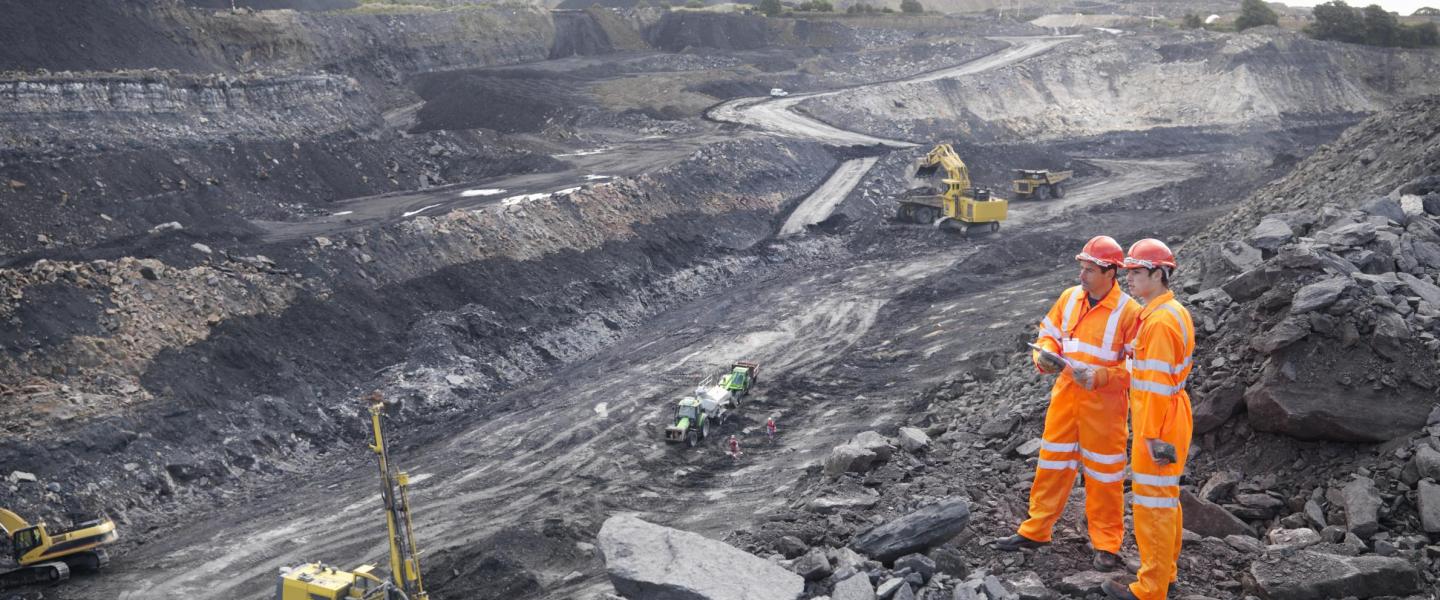A Comparison of Connectivity Solutions for Smart Mining

For mining operations in Africa and Asia-Pacific, cost-cutting has become vital in order to remain competitive in a volatile market. IT managers and C-suite leaders are turning to digitalization of mining systems and processes to gain a competitive edge, using real-time data visualization, cloud computing, and automated machinery. While most mines are eager to update their systems with the latest technology, not all mining connectivity networks are built to withstand the pressure of increased broadband demands.
In this article, we’ve broken down the main connectivity solutions available and outlined differentiators of each system to help you find the right fit for your mine’s unique connectivity requirements.
Connectivity in Remote Locations – Is Your Network Slowing You Down?
We’ve outlined the most widely used mining connectivity solutions on the market to help you meet broadband demands of the future.
Terrestrial Limitations: Fibre
If fibre-optic networks are available, mining companies will generally opt for terrestrial connectivity to ensure a reliable, high-speed and low-latency connection for communications. When not available, however, the cost of laying fibre over great distances or through difficult terrain is not viable for any mining operation located over 150km from city centres, or in forested, desert, or mountainous terrain.
Wavering Stability in Remote Areas: Microwave
The installation of a microwave link is often faster and less costly than establishing a fibre or satellite connection1. However, microwave connectivity becomes unstable in areas that require long-haul links requiring multiple repeaters2. In addition, that network of repeaters requires power and maintenance at every hop, necessitating a workforce just to refuel generators and maintain and realign the repeaters. Therefore, microwave backhaul frequently adds unnecessary complexity to a mine’s network.
Reliable Connectivity Anywhere: Satellite
Satellites have the advantage of global reach, no matter the location. The latest satellite solutions offer comparable speeds to fibre and enable enhanced communication services such as 4k video teleconferencing and direct, guaranteed connections to cloud solutions. New advances in satellite technology are making 5G and Internet of Things (IoT) a reality for places where terrestrial connections are too expensive to develop.
Comparing Satellite Constellations: Geosynchronous Orbit (GEO) vs Medium-Earth Orbit (MEO) vs Low-Earth Orbit (LEO)
Selecting the right connectivity solution is one of the most important considerations when it comes to successfully adopting and deploying IoT and automation across your mine. Satellite connectivity provides ubiquitous coverage and low-latency capabilities which can greatly increase operational efficiency by opening new doors to 5G connections and lag-free communications.
Satellites are classified by the orbit in which they operate. Geosynchronous orbit (GEO) satellites operate farthest from Earth, and therefore provide the greatest coverage. Medium Earth orbit (MEO) satellites are in an orbit closer to earth, and can provide much faster response times (latency) as well as the highest throughput from satcom. Low Earth orbit (LEO) satellites are an upcoming technology that is consumer focused, offering low latency but produce lower throughputs than MEO. By being close to Earth, these satellites have the smallest coverage, and therefore, hundreds or thousands of LEO satellites will be necessary to establish a network, increasing complexity of connecting to the fleet.
Your Satellite Options At a Glance
| GEO | MEO | LEO | |
| Target Applications | Video broadcast Web browsing Geographic reach B2B/C |
Business internet Cloud services Data, voice, video B2B |
Consumer internet Web browsing Gaming/VR B2C |
| Data Rates/User | 10 - 100 Mbps | 100 - 10,000 Mbps | 10 - 100 Mbps |
| Latency | High ~700 ms |
Low ~150 ms |
Low 30-50 ms |
| Complexity | Low | Mid | High |
A Satellite For Global Coverage: GEO
Orbiting at 36,000 km above the earth, GEO satellites have the farthest orbit and support services ranging from broadcast distribution of video and data services, as well as any communication, including voice, email, text, and business applications that are not latency sensitive.
Benefits:
- Supports basic voice, data and video, or time tolerant data access in remote areas 3
- Highly reliable communications with the longest track record and largest vendor ecosystem in the satellite industry
- Large coverage area enables the connection of multiple sites with a single satellite beam, letting sites share bandwidth to dynamically meet user demand and save OpEx
- Satellites appear in a fixed position above earth, and are the simplest to connect to your network
Fibre-like Connectivity for Large Scale Operations: MEO
MEO satellite constellations have entered the mining arena several years ago as a powerful and proven solution for mines that want fibre-like connectivity with lower latency than GEO satellites. Orbiting at 8,000 km above the earth, MEO offers high bandwidth and low latency, making it a reliable option for broadband applications. In remote areas where fibre or microwave connectivity are not available, MEO is the only way to enable full digitalization with high-throughput, data-centric use cases4
Benefits:
- Low satellite latency of approximately 150 ms per round trip
- High-throughput capabilities built to meet the demands of the most rigorous business applications, such as cloud services, ERP, automated machinery and real-time data visualization
- Leverage fully managed connectivity to allow experts to handle the satellite portion of your network, reducing overall complexity even compared to self-managed VSAT networks
Small but Mighty Connectivity: LEO
Low-earth orbit satellites will have the shortest distance to the Earth and will be much smaller than MEO and GEO satellites5. This leads to the lowest latency, but also reduced throughput capacity compared to MEO. However, due to the short distance to the Earth, hundreds or thousands of LEO satellites are required to provide coverage, which adds to network complexity and terminal cost. Unlike GEO and MEO, which have been well tested in the field, LEO operations are still years away.
Benefits:
- Lowest latency levels with speeds at 30-50 ms per round trip
Make Low Latency Connectivity a Reality
As data-intensive applications require more bandwidth in isolated locations around the globe, backhaul via fibre and microwave often offer the fastest connectivity, yet are costly or complex options to implement.
Satellites have long been a reliable connectivity solution to connect people and businesses practically anywhere on the globe. Of the three orbits, GEO and MEO are available today, offering wide coverage or fibre-like connectivity, and a multi-orbit operator can optimally match each technology with your unique requirements.
1 https://spectrum.ieee.org/telecom/wireless/109-microwave-towers-bring-the-internet-to-remote-alaska-villages
2 https://spectrum.ieee.org/telecom/wireless/109-microwave-towers-bring-the-internet-to-remote-alaska-villages
3 https://thenextweb.com/contributors/2018/11/03/the-new-space-race-is-all-about-satellites-pros-and-cons-of-each-orbit/
4 https://www.ft.com/content/aac53d86-8101-11e8-af48-190d103e32a4
5 https://www.slideshare.net/netscribes123/satellite-communication-for-iot-networks-emerging-trends?from_action=save




